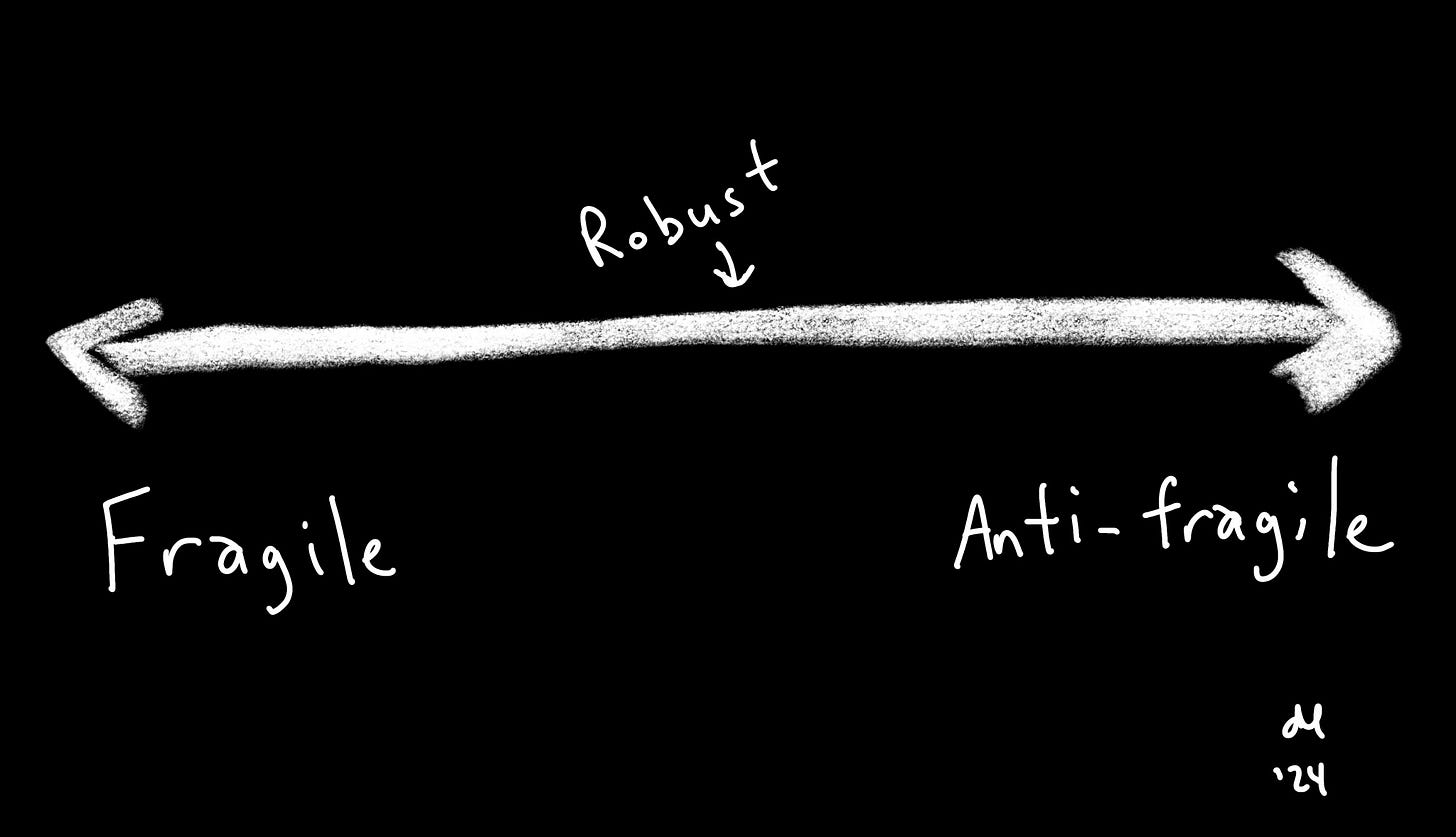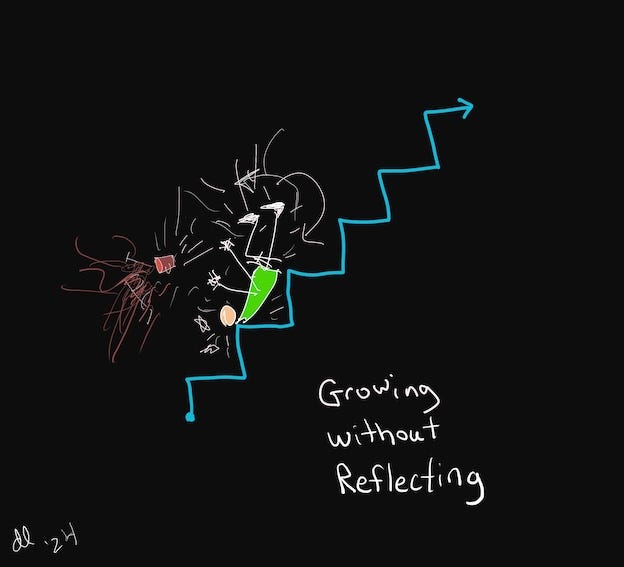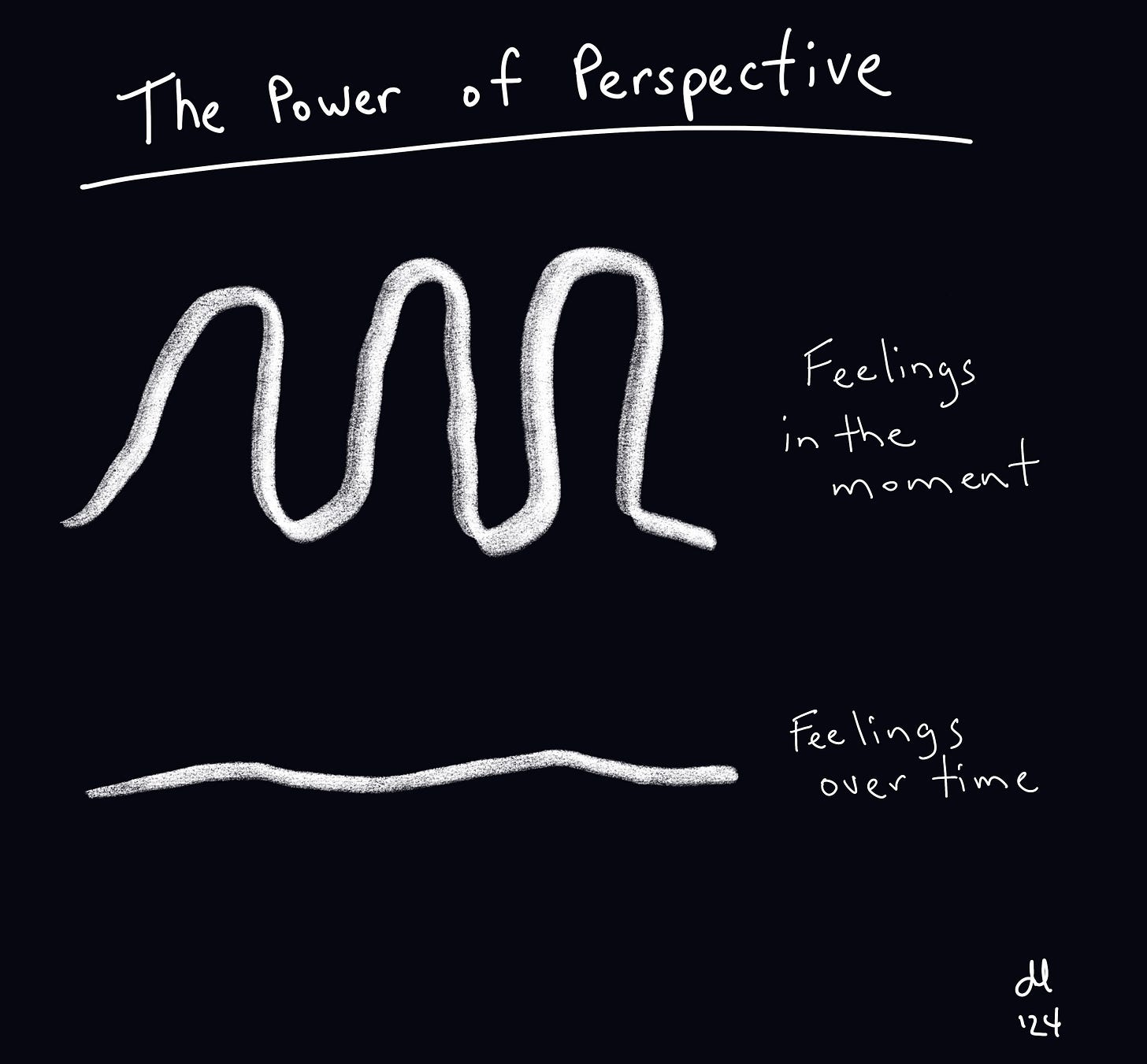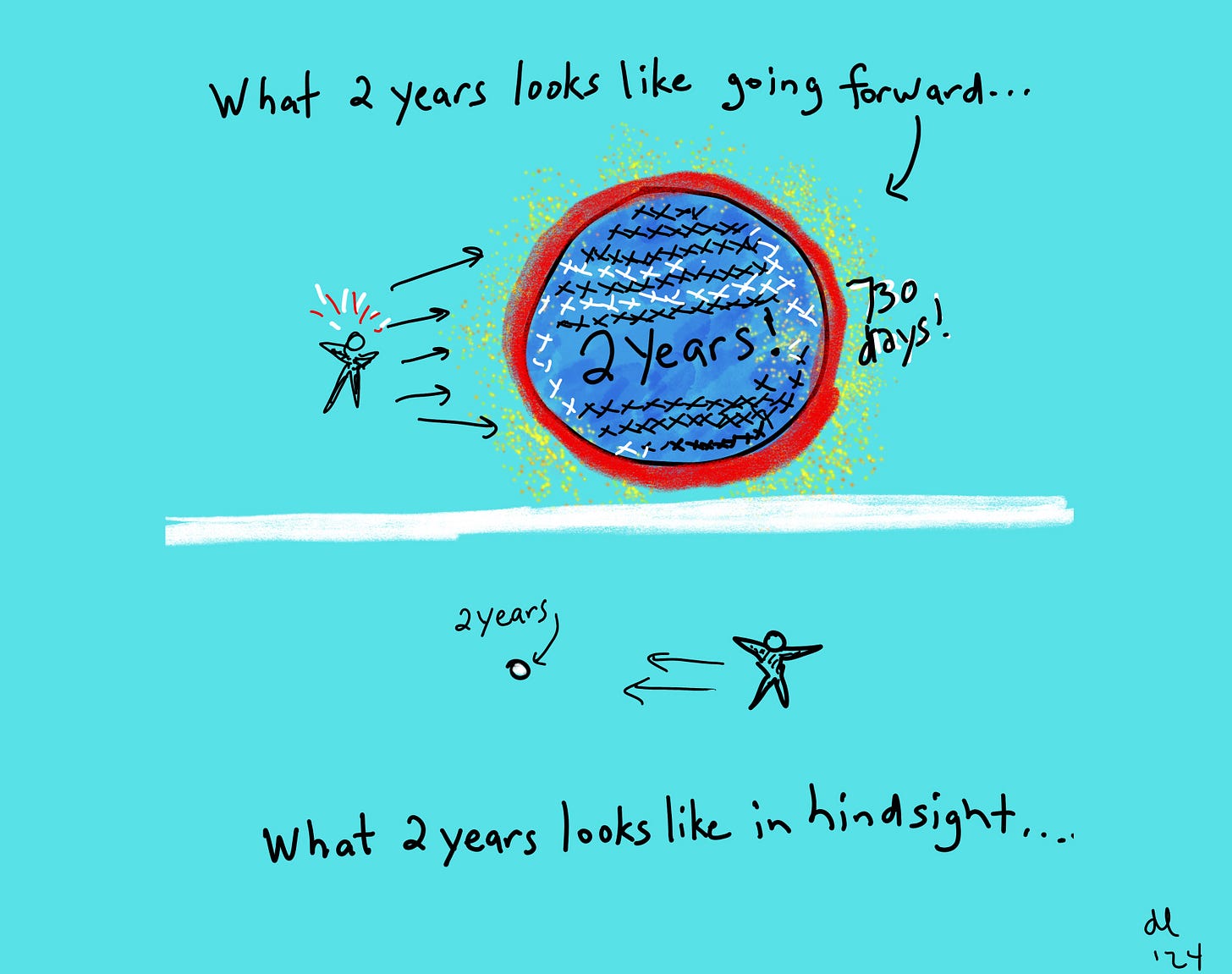How to Build Resilience with a Smarter Creative Ecosystem (Never Go "All-In" On One Platform)
Box Cutter Co. Free Issue No. 79
Have you seen the latest news? A potential ban on TikTok in the US! 😵
Social media alight with ranting and raving about “lost revenues” and various other entitled perspectives of “I’ve earned this!”
Add to this, recently, writers on Medium aghast, angry, and ranting about changed algorithms and declining earnings!
Many posting their shock, dismay, and public departure from the platform.
“I deserve more!”
“I demand answers Medium CEO!”
“I deserve to make the same monthly earnings as I have for the past 6 months!”
Sure, I get it.
Feeling like you’ve built something, made a few dollars, and then things change can be frustrating.
But all this performative exiting, shouting, and ranting is basically like the proverbial kid leaving the neighbourhood game with their ball because the rules (or outcome) are no longer to their liking.
“Fine, I quit… I’m not playing anymore! AND! I’m taking my ball, too!”
Can you hear the stomping and pouty bottom lip?
In this case, it’s more like:
“I’m taking my keyboard and leaving!”
But then…
I look at Notes (on Substack) as they flare up with declarations from some of the same creative types:
“I’m going ALL IN on Substack!”
“This is where I’m going to build my writing empire!”
The ironic absurdity is a bit much.
The issue isn’t this or that platform… it’s a universal principle. It’s called Change.
If there’s one thing we can rely on, it’s this: change is the only constant.
This universal truth applies to everything in life—and nowhere is it more evident than on social media platforms.
Let’s not forget:
The recent uproar about Facebook and Instagram this week as they tweak their rules on ‘free speech’
The Musky purchase of Twitter and its transformation into X causing a mass exodus and a flurry of debates over its direction. Matched with many voicing their performative exits recently because Musk is too close to Trump…
The death (or near-death) of countless platforms that once dominated the digital landscape—Vine, MySpace, Tumblr
Platforms come and go. Algorithms evolve. Policies shift.
AI advances will blow it all up. And, in their place, new platforms, new approaches, new algorithms…
Creators who rely solely on a single platform for their distribution, revenues and visibility are left scrambling, adapting, and rebuilding with every change.
The Solution? A Smarter Creative Ecosystem
As I wrote in the last issue:
…ecosystems don’t simply emerge out of nothing fully formed. They need a foundation—creative infrastructure—to support growth, sustainability, and longevity.
Building ‘relationships’ between your work and multiple platforms (e.g., creative infrastructure) is the key to building a creative ecosystem.
Social media platforms are for distribution, having a voice in ‘markets’, and connecting with others who may become part of an audience that resonates with your ideas, values, and work.
Building on one platform is like investing all your retirement savings in one publicly-traded company. (or Bitcoin)
Going all-in on one platform is like….
…having a toolbox with only a hammer
…running a hospital on only one power source
…building a symphony with only one instrument
… training for a marathon by running 100m sprints repeatedly.
You get my drift.
The Problem with Platform Dependency
Relying too heavily on one platform is like planting your entire garden on a single patch of rocky soil. When the weather changes—algorithms shift, bans emerge, trends fade—it all withers.
TikTok creators are scrambling to “diversify” their presence because their single microphone is now obsolete.
Writers on Medium fret over falling views and are questioning the worth of staying on the platform. (or performative exiting… with a shout and a pout).
This isn’t new.
Platforms change — constantly.
For example, when I first started on Medium in June 2022 — the many stories and glory days of pandemic times where some writers made six figures on the platform — still circulated.
(I still see these floating around from time to time. False credibility markers and false advertising for the latest “How to make (real) money on Medium” courses)
When I began focussing more energy on LinkedIn in the fall of 2022, the mythological stories of Justin Welsh and his solopreneur success were circulating rampantly. (they still do)
Or, Mr. Beast on Youtube.
Various Instagram influencers.
And so on, and so on.
The question is:
Have you built a creative ecosystem to weather storms, changes, and shutdowns?
Or are you tethered to the whims of a single platform, hoping the algorithms stay in your favour?
You’ve probably read this before — social media platforms are rented digital real estate.
It’s like taking your fruits and vegetables to a farmer’s market and renting a stall to sell your wares. Your future is tied to being able to rent that space to make your revenues.
The social media company is the landlord, and it has a relationship with government regulations (and subject to government changes).
Building a creative business (wisely) should never be about hitching your future to the rise and fall of one digital tool. That’s like expecting the one horse you hitch your wagon to… to stay alive forever.
Want to build something lasting, diverse, and sustainable?
Build and design resilient, flexible, and expansive systems.
If your creative work exists only on borrowed digital spaces, you’re always one policy change away from collapse.
What could (or does) that ecosystem look like for you?
What Is a Smarter Creative Ecosystem?
A creative ecosystem isn’t just a collection of accounts or tools. It’s a living system full of many relationships.
Every part connects and supports.
Your ideas feed your platforms, and your platforms feed each other.
Your audience grows through these connections, not through “all-in” precarious efforts — Or scattered, flitting sprints.
At the foundation of this ecosystem lies creative infrastructure—systems that sustain your work:
Systems for generating, refining, and storing ideas.
Strategies for publishing and promoting your work.
Tools that ensure consistency without burning out.
Mindsets to ebb and flow with the ups and downs of creative enterprises
This isn’t about speed
It’s about flow, flexibility and long-term stability. (And sometimes… speed is a nice unintended consequence)
Unfortunately, too many folks seem to be focused on the “growth” aspect…
The “I just reached 30 gazillion followers… crowd”
Cool, however, this does not equate to stability nor sustainability. (It also kind of sounds like a cult…)
Yeah, sure, go All-In on Substack… just recognize it’s propped up by private seed- capital investments that are looking for solid returns on their $100 million
(And, we can be confident there are timelines attached to those returns)
Platforms come, and platforms go.
Build Resilience and Autonomy with Wiser Choices
Building resilience, stability, and autonomy means shifting focus away from the quick and the viral. The “grow” only approaches (I see much of this on Substack today).
Consider trying these:
1. Anchor Your Work Across Multiple Platforms
Stop chasing metrics on a single platform.
Use core platforms—LinkedIn, Substack, Medium, X, Instagram—to create interconnected layers of distribution and connection — as well as actual and potential audiences
Boats don’t fasten themselves to docks with only one rope.
2. Create Educational Content That Lasts
Email courses, frameworks, guides—these are products and assets (like nutrients in your creative ecosystem)
Educational posts and products build trust, authority, and long-term value (well after they’re created and posted)
Identify challenges you’re facing, dig into the solutions, share and teach how you did it (that’s the basic underlying principle of Box Cutter Co.)
3. Prioritize Energy Over Output
Burnout collapses creative output and distribution — fires can assist in re-generating ecosystems but incinerate infrastructure (find balance!)
Design systems protecting and sustaining your energy: clear boundaries, deliberate rest, and alignment with values and principles (e.g., Soulpreneur)
4. Think Systematically, Not Transactionally
Every post, article, and product should connect to the whole.
Ensure your work builds momentum, not just noise.
Don’t rush into “selling”
Personal Examples
I manage the majority of our household investments. Registered retirement plans and a locked-in retirement accounts.
I lost about $10,000 this past year on one of our investments. An IT-based medical records company.
When I invested, I knew there were risks. I didn’t consider the risk of the company going from public to private.
When it did, shareholders were paid out dimes to the dollar. Ouch!
However, my approach to investing involves holding the majority of stock investments in relatively stable companies, especially those that pay dividends. I then have some more risky investments with the potential for big upside (and downside).
Our overall holdings are still up significantly because I’ve diversified our investments. For example, our Nvidia holdings are up massively from when I purchased them over 5 years ago.
These holdings alone make up the loss from the health records company that went private.
I use the same principles for building a creative ecosystem.
The Box Cutter Co. Creative Ecosystem
I invest in platforms that produce good results while they’re producing good results.
Box Cutter Co. is centred on Substack, but I also cross-pollinate on Medium and my website.
LinkedIn has worked great for me for the past two years. One of my core services and Ghostwriting clients reached out on LinkedIn based on content I was posting.
I also post on X, Instagram, and Threads, and I have started posting more frequently on Facebook.
Sometimes, I start with short posts (on X) that then become longer LinkedIn posts, which become Box Cutter Co. issues — and vice versa.
Sometimes, long form gets broken into smaller pieces.
I promote Box Cutter Co. issues across multiple platforms. I recently started a publication on Medium called Box Cutter Co. I cross-post there and post new, original articles.
We (my wife,
and I) also have a Humanity Academy publication on Medium and a dedicated writing account called “The Learning Journals Initiative.”Almost all of these posts and writings link to or directly address our multiple educational email courses and our growing portfolio of courses on the Humanity Academy Virtual Campus (hosted on Thinkific).
All live within my (and our) ecosystems, each feeding into the next. And, just like any healthy ecosystem, when projects or products die, they feed the next generation of initiatives and projects — like a tree that dies and falls in the forest.
This system isn’t about being everywhere. It’s about ensuring that wherever I am, I’m building something connected, something sustainable, something lasting.
What Would Change for You?
Imagine this:
Substack disappears or gets bought by Facebook.
Medium goes bankrupt (it is a private company).
LinkedIn gets shut down because it’s deemed a monopoly (on empty, “I’m humbled and honoured” posts 😬🙄)
Would your creative work survive?
With a smarter creative ecosystem, it wouldn’t just survive—it could potentially thrive.
Think long-term. Build intentionally. Be diverse, build in fluidity and flexibility.
What’s one step you can take to build resilience and autonomy into your creative ecosystem?
Or, maybe you already have — care to share?
Popular Course Opened for FREE Enrolment
Maybe you’ve seen this, maybe you haven’t.
We just opened one of our flagship courses on our Virtual Campus to Free enrolment for the next 27 days.
It’s a 3-Module, 9-lesson course on our Virtual Campus.
It builds off of the very popular Free 5-day email course The Learning Journals Crash Course.
No spam. The only catch is we want your feedback and critique. We’re working on several follow-up courses related to this one 👇








I agree with you. If you are dependent on only one platform than you are one policy away to put your “DIGITAL EMPIRE” into shambles. What matters is building a loyal audience and also polishing your skills. When you have reached a certain level of stagnation in your growth chart, move forward. Change is a constant.